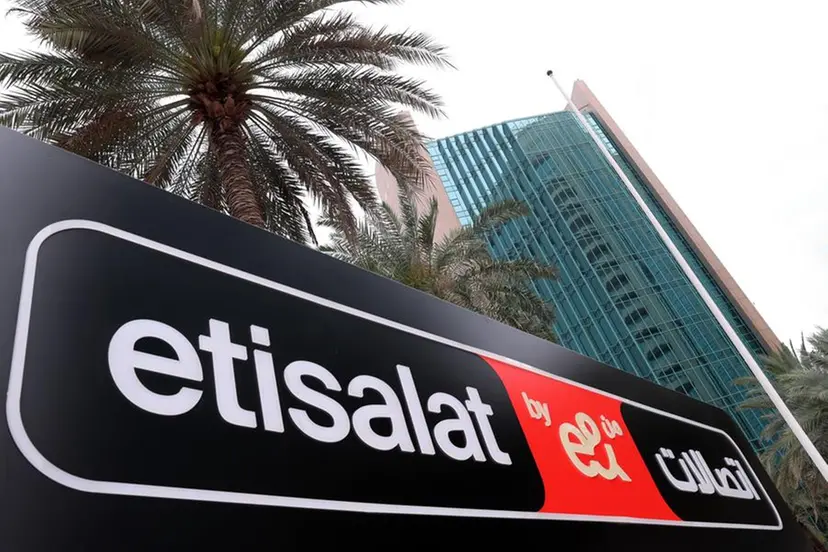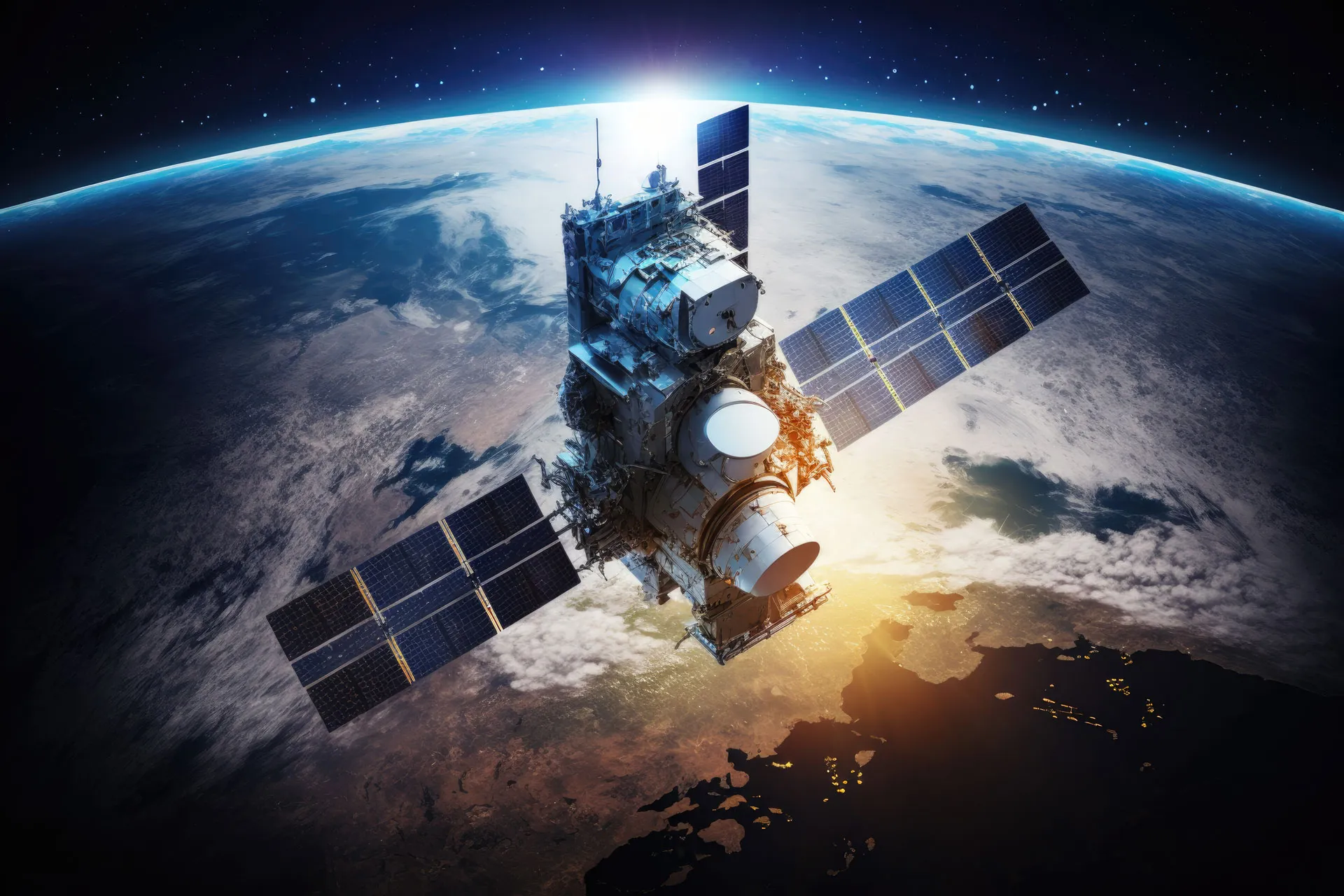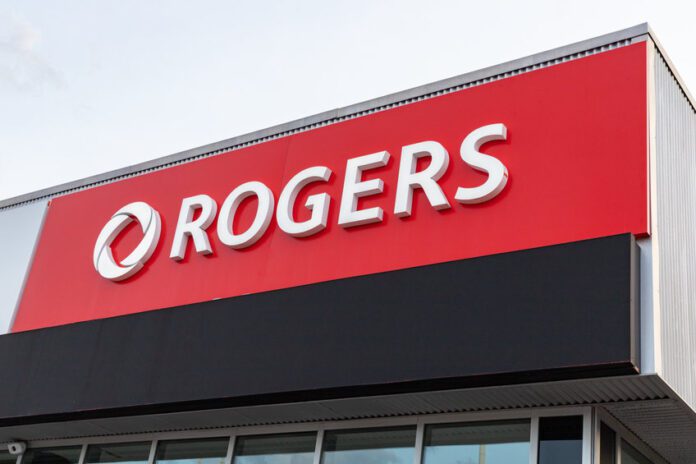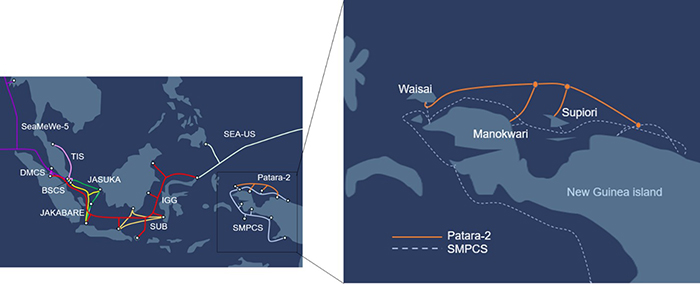Month: October 2023
UAE network operator “etisalat by e&” achieves 5G mmWave distance milestone
UAE network operator etisalat by e& today claimed the world’s first deployment of 5G mmWave covering more than 10 kilometres, as it highlighted the potential of the range to support fixed wireless access (FWA) and industrial applications over private networks. In a statement, e& explained the pilot used the 26Ghz band and delivered high speeds. The test forms part of a push to address demand for mobile networks capable of delivering large amounts of data reliably and securely.
The UAE telco claimed its test demonstrated the network’s ability to uplink heavy video and real-time data transfer with faster speed and lower latency, supporting “industries operating over vast areas.”
Alongside citing opportunities for FWA, the operator highlighted the potential of private networks using the frequencies across various industry verticals, citing healthcare, manufacturing and public safety.
The implementation of 5G mmWave (FR2 only) network capability was steered as part of etisalat by e& vision to deliver state of art technologies to the society. This is considered as a global first 5G deployment on mmWave @ 26Ghz, FR2 only over 10 km with high speeds. The step aimed at addressing the demand of consumers and enterprises to have a solution following the highest standards of data security and digitalisation over mobile network that’s also capable to deliver large amounts of data reliably and securely.
The mmWave spectrum generally refers to above 24GHz, that can deliver extreme capacity, ultra-high throughput and ultra-low latency which has huge potential in multiple applications for consumers as well as enterprises.
The solution demonstrates the ability of 5G networks to enable uplink heavy video and real-time data transfer scenarios over a specific geographical area, effectively paving the way toward the digital transformation of industries operating over vast areas.
Marwan Bin Shakar, SVP Access Network Development, etisalat by e& said: “This deployment is a commitment to unleashing the full potential of 5G network and pushing the boundaries to redefine the world of connectivity. This is a significant milestone for 5G mmWave, especially that the demand for data has increased exponentially, and this plays a pivotal role in increasing network capacity. Our partnerships with technology leaders has also contributed to setting these benchmarks in the industry and bring advanced solutions to the country making sure we address customer digitalization’s requirements and enabling quicker time to market.”
This achievement will support the use of 5G network for FWA subscribers who can enjoy fiber like user experience over wireless network and also accelerate the adoption of 5G private network technology in other sectors like oil and gas, public safety, healthcare, manufacturing and more to have complete control over their user data with on-premise hosted MEC (Multi-access edge computing) and use their enterprise data and security policies to manage data delivered from a private 5G network.

References:
UAE’s “etisalat by e&” announces first software defined quantum satellite network
Important satellite network services to be discussed at WRC 23
Several agenda items for WRC‑23 include fixed, mobile, broadcasting, and radio determination satellite services. Study Group 4 ITU–R is responsible for preparing these agenda items, aiming to ensure efficient use of the radio spectrum and satellite orbit systems and networks.
Non‑geostationary satellite orbit (non‑GSO) systems are one of the top priorities on the WRC‑23 agenda.
First, coexistence must be ensured between non‑GSO and geostationary satellite orbit (GSO) systems, with protection being ensured for both kinds of satellites. This requires accurate calculations of potential interference to and from non‑GSOs, allowing possible modifications to non‑GSO systems to be considered where needed.Improved rules for non‑GSOs should also cover those on orbital tolerances. These will be treated under the conference’s agenda items for satellite services (7A), milestone reporting (7B), and aggregate interference to GSOs (7J), along with a functional description for software tools to determine non‑GSO fixed-satellite service (FSS) system or network conformity (ITU–R Recommendation S.1503).
Satellite operators expect decisions at WRC‑23 to provide maximum flexibility in the use of spectrum allocations for certain purposes.
These include: earth stations in motion (ESIM) in the FSS, under agenda items 1.15 and 1.16; inter-satellite communications in the FSS, item 1.17; and FSS in the existing broadcasting-satellite service (BSS), item 1.19.
WRC‑23 discussions on these topics will aim to allow for more efficient spectrum use than is currently the case.
Amid rapid satellite development in recent years, non‑GSO systems have been deployed on a large scale. At the same time, new high-capacity satellites have gone into geostationary orbit.
On the regulatory side, the addition of a satellite component to the International Mobile Telecommunications (IMT‑2020) ecosystem has enabled satellite usage in cellular networks, along with new satellite services and other innovations.
Member States of the International Telecommunication Union (ITU) are increasingly raising the issue of sustainability, equitable access, and the rational use of GSO and non‑GSO spectrum resources. Resolution 219 of the ITU Plenipotentiary Conference (Bucharest, 2022) reflects these concerns.
WRC‑23 needs to continue giving high priority to establishing equitable access to satellite orbits. This means recognizing the special needs of developing countries, often including geographical challenges.
The development of innovative satellite technologies has now moved significantly ahead of regulations in the use of radio-frequency spectrum and satellite orbits. As this gap continues widening, ITU must find new approaches to keep international satellite regulation timely and relevant for the industry.
Technology is advancing so rapidly that some operators have begun to introduce new satellite technologies using GSO and non‑GSO satellites without waiting for conference decisions to regulate such use. Moreover, national administrations sometimes grant authorization for such uses in the absence of internationally agreed rules.
Concerns are growing about derogations from the ITU Radio Regulations, particularly under 4.4 of Article 4 — which allows national administrations to assign frequencies exceptionally, outside the Table of Frequency Allocations and other treaty requirements, as long as such assignments do not cause harmful interference to any existing radio services.
The conference will consider how to deal with the widespread use of 4.4, for non‑coordinated satellite networks. It should also clarify whether the derogation option under 4.4 should be available for all radio systems, or only non‑commercial systems.
Overall, WRC‑23 must clarify how administrations use the provision, when they have the right to invoke it, and which specific circumstances justify exceptional use of 4.4 on a temporary basis.
The Radio Regulations, containing the rules and regulations for the use of the radio-frequency spectrum and satellite orbits, are updated approximately every four years, in line with ITU’s associated conference cycle.
Perhaps the time has come to think about reducing the number of years between World Radiocommunication Conferences and simplifying the preparatory cycle and associated documentation. One way forward could be to reassess the current Conference Preparatory Meeting (CPM) format and to consider merging the two CPM sessions into one.
Given the rapid growth, transformation and innovation phase the satellite industry is now going through, WRC‑23 should instruct the ITU Radiocommunication Sector to conduct urgent studies on the potential for reusing frequency bands allocated to mobile services for non‑GSO satellite systems.
National administrations, as well as companies and organizations taking part as ITU Sector Members, need to jointly address these new issues, strengthen the ITU–R framework, and pursue global solutions for the benefit of all.

References:
Amazon launches first Project Kuiper satellites in direct competition with SpaceX/Starlink
Juniper Research: 5G Satellite Networks are a $17B Operator Opportunity
New developments from satellite internet companies challenging SpaceX and Amazon Kuiper
SatCom market services, ITU-R WP 4G, 3GPP Release 18 and ABI Research Market Forecasts
KDDI Partners With SpaceX to Bring Satellite-to-Cellular Service to Japan
European Union plan for LEO satellite internet system
GSMA- ESA to collaborate on on new satellite and terrestrial network technologies
ABI Research and CCS Insight: Strong growth for satellite to mobile device connectivity (messaging and broadband internet access)
Telstra partners with Starlink for home phone service and LEO satellite broadband services
FT: A global satellite blackout is a real threat; how to counter a cyber-attack?
Spark New Zealand partnering with Lynk Global to offer a satellite-to-mobile service
Deutsche Telekom with AWS and VMware demonstrate a global enterprise network for seamless connectivity across geographically distributed data centers
Deutsche Telekom (DT) has partnered up with AWS and VMware to demonstrate what the German network operator describes as a “globally distributed enterprise network” that combines Deutsche Telekom connectivity services in federation with third party connectivity, compute, and storage resources at campus locations in Prague, Czech Republic and Seattle, USA and an OGA (Open Grid Alliance) grid node in Bonn, Germany.
The goal is to allow customers to book connectivity services directly from DT using a unified interface for the management of the network across its various locations.
The POC demonstrates how the approach supports an optimized resource allocation for advanced AI based applications such as video analytics, autonomous vehicles and robotics. The demonstration use case is video analytics with distributed AI inference.
PoC setup:
The global enterprise network integrates Deutsche Telekom private 5G wireless solutions, AWS services and infrastructure, VMware’s multi-cloud telco platform, OGA grid nodes and Mavenir’s RAN/Core functions. Two 5G Standalone (SA) private wireless networks deployed at locations in Prague, Czech Republic and Seattle, USA are connected to a Mavenir 5G Core hosted on AWS Frankfurt Region leveraging the framework of the Integrated Private Wireless on AWS program. The convergence of the global network with local high-speed 5G connectivity is enabled by the AWS backbone and infrastructure.
The 5G SA private wireless network with User Plane Function (UPF) and RAN hosted at the Seattle location, is operating on the VMware Telco Cloud Platform to enable low latency services. The VMware Service Management and Orchestration (SMO) is also deployed in the same location and serves as the global orchestrator. The SMO framework helps to simplify, optimize and automate the RAN, Core and its applications in a multi-cloud environment.
To demonstrate the benefit of this approach, the deployed POC used a video analytics application where cameras were installed at both Prague and Seattle locations and connected through a private wireless global enterprise network. Using this approach, operators were able to run AI components concurrently for immediate analysis and inferencing. This helps demonstrate the ability for customers to seamlessly connect devices across locations using the global enterprise network. Leveraging OGA architectural principles for Distributed Edge AI Networking, an OGA grid node was established on Dell infrastructure in Bonn facilitating seamless connectivity across the European locations.
Statements:
“As AI gets engrained deeper in the ecosystem of our lives, it necessitates equitable access to compute and connectivity for everyone, everywhere across the globe. Multi-national enterprises are seeking trusted and sovereign compute & connectivity constructs that underpin an equitable and seamless access. Deutsche Telekom is excited to partner with the OGA ecosystem for co-creation on these essential constructs and the enablement of the Distributed Edge AI Networking applications of the future,” – Kaniz Mahdi, Group Chief Architect and SVP Technology Architecture and Innovation at Deutsche Telekom.
“VMware is proud to support this Proof of Concept – contributing know-how and a modern and scalable platform that aims to offer the agility required in distributed environments. VMware Telco Cloud Platform is suited to deliver the compute resources on-demand wherever critical customer workloads are needed. As a founding member of the Open Grid Alliance, VMware embraces both the principles of this initiative and the opportunity to collaborate more deeply with fellow alliance members AWS and Deutsche Telekom to help meet the evolving needs of global enterprise customers.” – Stephen Spellicy, vice president, Service Provider Marketing, Enablement and Business Development, VMware
References:
https://www.telekom.com/en/media/media-information/archive/global-enterprise-network-1050910
Deutsche Telekom Global Carrier Launches New Point-of-Presence (PoP) in Miami, Florida
AWS Integrated Private Wireless with Deutsche Telekom, KDDI, Orange, T-Mobile US, and Telefónica partners
Deutsche Telekom Achieves End-to-end Data Call on Converged Access using WWC standards
Deutsche Telekom exec: AI poses massive challenges for telecom industry
Amazon launches first Project Kuiper satellites in direct competition with SpaceX/Starlink
Amazon has finally joined the race to build massive constellations of satellites that can blanket the globe in internet connectivity — a move that puts the tech company in direct competition with SpaceX and its Starlink satellite Internet system. The first two prototype satellites for Amazon’s Project Kuiper space network, launched aboard a United Launch Alliance (ULA) rocket from Cape Canaveral, Florida, at 2:06 p.m. ET Friday. The Protoflight launch is the first mission in a broader commercial partnership between ULA and Amazon to launch the majority of the Project Kuiper constellation.
“This is Amazon’s first time putting satellites into space, and we’re going to learn an incredible amount regardless of how the mission unfolds,” Rajeev Badyal, a vice president of technology for Project Kuiper at Amazon, said in a statement from the company before the launch. “We’ve done extensive testing here in our lab and have a high degree of confidence in our satellite design, but there’s no substitute for on-orbit testing,” he added.
“This initial launch is the first step in support of deployment of Amazon’s initiative to provide fast, affordable broadband service to unserved and underserved communities around the world,” said Gary Wentz, ULA vice president of Government and Commercial Programs. “We have worked diligently in partnership with the Project Kuiper team to launch this important mission that will help connect the world. We look forward to continuing and building on the partnership for future missions.”
United Launch Alliance cut off the livestream of the launch after the first stage of its rocket — the portion that provides the initial boost at liftoff — finished firing its engines off. The company did confirm “mission success,” and said in a news release that it “precisely” delivered the satellites. Amazon could not immediately confirm contact with the satellites.

A ULA Atlas V rocket carrying the Protoflight mission for Amazon’s Project Kuiper lifts off from Space Launch Complex-41 at 2:06 p.m. EDT on October 6.
Photo by United Launch Alliance
………………………………………………………………………………………………………………………………………………………………………………………………………………………………………………….
If successful, the mission could queue up Amazon to begin adding hundreds more of the satellites into orbit, eventually building a network of more than 3,200 satellites that will work in tandem to beam internet connectivity to the ground.
But why wasn’t a Blue Origin (owned by Jeff Bezos) rocket used to launch the Project Kuiper satellites? It’s because Blue Origin has yet to launch anything into orbit. Although its suborbital space tourist rocket New Shepard has made many flights, the New Glenn rocket that it has been developing for more than a decade to take payloads like Kuiper satellites to orbit is at least three years behind schedule. Its debut flight is penciled in for next year. In April last year, Amazon announced a gigantic purchase of up to 83 launches, the largest commercial purchase of rocket launches ever. That includes 27 from Blue Origin and the rest from two other companies, Arianespace of France and United Launch Alliance of the United States. The contracts with the other companies also rely on new rockets that have not yet flown: the Ariane 6 from Arianespace and the Vulcan from United Launch Alliance.
The leading satellite Internet company is Starlink, the SpaceX subsidiary that has been growing rapidly since 2019. SpaceX has more than 4,500 active Starlink satellites in orbit and offers commercial and residential service to most of the Americas, Europe and Australia.
The space industry is in the midst of a revolution. Until relatively recently, most space-based telecommunications services were provided by large, expensive satellites in geosynchronous orbit, which lies thousands of miles away from Earth. The drawback with this space-based internet strategy was that the extreme distance of the satellites created frustrating lag times. Now, companies including SpaceX, OneWeb and Amazon are looking to bring things closer to home.
Even before those companies began to build their services, the satellite industry dreamed of delivering high-speed, space-based internet directly to consumers. There were several such efforts in the 1990s that either ended in bankruptcy or forced corporate owners to shift plans when expenses outweighed the payoffs.
Such widespread high-speed internet access could be revolutionary. As of 2021, nearly 3 billion people across the globe still lacked basic internet access, according to statistics from the United Nations. That’s because more common forms of internet service, such as underground fiber optic cables, had not yet reached certain areas of the world.
SpaceX is well ahead of the competition in terms of growing its service, and its efforts so far have occasionally thrust the company into geopolitical controversy. The company notably faced significant blowback in late 2022 and early 2023 for preventing Ukrainian troops on the front lines of the war with Russia from accessing Starlink services, which had been crucial to Ukraine’s military operations. (The company later reversed course, and SpaceX founder Elon Musk discussed the Ukraine controversy in a recent book.) It’s possible Amazon’s Project Kuiper constellation could become part of that conversation — facing similar geopolitical pressures — if the network proves successful.
“I’m also curious if Amazon plans dual-use capabilities where government/defense will be a major client. This may result in the targeting of Kuiper like that of Starlink in Ukraine,” said Gregory Falco, an assistant professor of mechanical and aerospace engineering at Cornell University, in a statement.
Despite the promises of a global internet access revolution, the massive satellite megaconstellations needed to beam internet across the globe are controversial. Already, there are thousands of pieces of space junk in low-Earth orbit. And the more objects there are in space, the more likely it is that disastrous collisions could occur, further exacerbating the issue.
The Federal Communications Commission, which authorizes space-based telecom services, recently began enhancing its space debris mitigation policies. The satellite industry has largely pledged to abide by recommended best practices, including pledging to deorbit satellites as missions conclude.
In a May blog post, Amazon previously laid out its plans for sustainability, which include ensuring its satellites are capable of maneuvering while in orbit. Amazon also pledged to safely deorbit the first two test satellites at the end of their mission.
Separately, astronomers have also continuously raised concerns about the impact all these satellites in low-Earth orbit have on the night sky, warning that these manmade objects can intrude upon and distort telescope observations and complicate ongoing research.
Amazon addressed those concerns in a statement to CNN, saying one of the two prototype satellites it launched Friday will test antireflective technology aiming to mitigate telescope interference. The company has also been consulting with astronomers from organizations such as the National Science Foundation, according to Amazon spokesperson Brecke Boyd. However, SpaceX has made similar commitments.
It remains to be seen how well Project Kuiper will compete with SpaceX’s Starlink. And while Starlink already has more than 1 million customers, documents recently obtained by the Wall Street Journal showed that the SpaceX megaconstellation hasn’t been as successful as once projected.
As far as consumer price points go: People can purchase a Starlink user terminal for a home for about $600 plus the cost of monthly service.
Amazon has said it hopes to produce Project Kuiper terminals for as low as about $400 per device, though the company has not yet begun demonstrating or selling the terminals. The company has not revealed a price for monthly Kuiper services.
SpaceX has had the clear advantage of using its own Falcon 9 rockets to launch batches of Starlink satellites to orbit.
Amazon does not have its own rockets. And while the Jeff Bezos-founded rocket company Blue Origin is working on a rocket capable of reaching orbit, the project is years behind schedule.
For now, Kuiper satellites are launching on rockets built by United Launch Alliance, a close partner of Blue Origin. In addition to ULA and Blue Origin, Amazon has a Project Kuiper launch contract with European launch provider Arianespace.
On August 28, The Cleveland Bakers and Teamsters Pension Fund, which owns a stake in Amazon, filed a lawsuit against the company over the launch contracts. The lawsuit alleges Amazon executives “consciously and intentionally breached their most basic fiduciary responsibilities” in part by forgoing the option of launching Project Kuiper satellites on rockets built by SpaceX, which the suit claims is “one of the most cost-effective launch providers.”
“The claims in this lawsuit are completely without merit, and we look forward to showing that through the legal process,” said an Amazon spokesperson.
If all goes to plan, Amazon said it intends to launch its first production satellites early next year and begin offering beta testing to initial customers by the end of 2024, according to a news release.
References:
https://www.nytimes.com/2023/10/06/science/amazon-project-kuiper-launch.html
Rogers Communications activates 5G service in Toronto subways
Canadian telco Rogers Communications has announced that it has activated 5G services in the busiest sections of the Toronto subway system for customers of all major Canadian mobile networks.
Rogers conducted extensive testing, including live calls with Toronto Maple Leafs Defenceman Morgan Rielly, who FaceTimed his father while riding the subway underground. See video here.
In April, Rogers announced its plans to introduce full 5G connectivity services to the entire Toronto subway system, including access to 911 for all riders. Also in April, Rogers acquired the Canadian operations of BAI Communications, which had owned the rights to provide wireless service on the Toronto subway.
Rogers stated that it conducted extensive testing, including live calls, to prepare the network for all riders. Beginning on October 2nd, customers of all major Canadian carriers can now connect to 5G and engage in voice calls, texting, and streaming within the Toronto Transit Commission (TTC) subway system in the following areas:
- On Line 1, including all stations and tunnels in the Downtown U, as well as Spadina and Dupont stations
- On Line 2, encompassing thirteen stations from Keele to Castle Frank, along with the tunnels between St George and Yonge stations.
“We are very pleased to bring 5G connectivity to all subway riders,” said Tony Staffieri, President and CEO of Rogers. “Our team has been working around the clock to introduce an immediate solution so all riders can connect when travelling on the busiest sections of the TTC subway system. I am so proud of our Rogers technology team who continue to bring innovation, ingenuity, and leading solutions to Canadians. Today’s announcement is another milestone in our plan to make wireless services available throughout the entire subway system.”
“Our dedicated team of technologists designed and introduced an immediate solution that added capacity, so Bell and Telus could join the network,” said Ron McKenzie, Chief Technology and Information Officer at Rogers. “For over 10 years, subway riders have been without mobile phone services and the Rogers team is pleased to step up and make 5G a reality for all riders today.”

https://telecomtalk.info/rogers-5g-enhanced-network-toronto-ttc-subway/860378/
NEC completes Patara-2 subsea cable system in Indonesia
NEC Corp. announced that the Patara-2 submarine cable system connecting multiple islands across Indonesia is complete and operational. This subsea cable is owned by Telkom Indonesia, the biggest digital telco company in Indonesia, which is strongly committed to accelerating the country’s digitalization.
The Patara-2 is a 100 Gigabit per second (Gbps) x 80 wavelengths (wl) x 2 fiber pairs (fp) optical fiber submarine cable system measuring approximately 1,200 kilometers. In addition to the existing Sulawesi Maluku Papua Cable System (SMPCS) and others in Indonesia provided by NEC, this new cable system enhances connectivity among the cities of Waisai, Manokwari, and Supiori.

NEC’s major supply record in Indonesia and the Patara-2 cable system
……………………………………………………………………………………………………………………..
“Both the Patara-2 and SMPCS cable systems enable the network in the north of Papua to have a redundant configuration, providing highly reliable communications in Papua,” said Herlan Wijanarko, Director of Network & IT Solutions, Telkom.
“NEC, in cooperation with NEC Indonesia, is honored to provide advanced connectivity among Indonesian cities, and has been involved in a variety of submarine cable projects for Telkom since 1991, including IGG and SMPCS,” said Atsushi Kuwahara, Managing Director, Submarine Network Division, NEC Corporation. “We have laid more than 10 submarine cable systems in the region and are proud to continue contributing to the expansion of Indonesia’s connectivity.”
NEC has been a leading supplier of submarine cable systems for more than 50 years, and has built more than 400,000 km of cable, spanning the earth nearly 10 times. NEC is well-established as a reliable partner in the submarine cable field as a system integrator that provides all aspects of submarine cable operations, including the manufacture and installation of optical submarine cables and repeaters, provision of ocean surveys and route designs, delivery, training and testing. NEC subsidiary OCC Corporation manufactures optical submarine cables capable of withstanding water pressures at ocean depths beyond 8,000 meters.
Also, NEC recently completed a long-distance field trial on the IGG cable system owned by Telkom Indonesia. The trial involved using NEC’s latest XF3200 transponder, which the Japanese cable manufacturer says has the world’s highest level of transmission performance at 800 Gbit/s.
References:
https://www.nec.com/en/press/202310/global_20231002_01.html
https://www.telkom.co.id/sites
https://www.lightreading.com/cable-technology/nec-completes-indonesia-s-new-subsea-cable-system
Business Research Company: Global Wireless Mesh Network Market will increase by 12% in 2023
According to The Business Research Company’s Wireless Mesh Network Global Market Report 2023, the global wireless mesh network market (aka Wireless Access Point market) is poised for substantial growth, with the market size expected to expand from $7.41 billion in 2022 to $8.30 billion in 2023, marking an impressive Compound Annual Growth Rate (CAGR) of 12%.
This growth trend is projected to continue, with estimates suggesting that the market will reach $12.78 billion in 2027, at a CAGR of 11.4%. The growth is attributed to various factors, including government support, global population growth, urbanization, increased demand for smart connected devices, and the rising need for industrial automation.
……………………………………………………………………………………………………………………………..
………………………………………………………………………………………………………………………
The global wireless mesh network market features a diverse array of players, resulting in a fairly fragmented landscape. LM Ericsson led the wireless mesh network market with a 9.5% share, followed by Hewlett Packard Enterprise (HPE), Cisco Systems Inc., Zebra Technologies Corporation, Hitachi, Ltd., Qualcomm Incorporated, TP-Link Technologies Co Ltd., Qorvo Inc., Netgear Inc., and Digi International Inc.
The global wireless mesh network market is segmented as follows:
- By Radio Frequency: Sub 1 GHz Band, 2.4 GHz Band, 4.9 GHz Band, 5 GHz Band
- By Mesh Design: Infrastructure Wireless Mesh, AD-HOC Mesh
- By Component: Product, Service
- By Application: Home Networking, Video Surveillance, Disaster Management and Rescue Operations, Medical Device Connectivity, Traffic Management
- By End-Use: Education, Government, Healthcare, Hospitality, Mining, Oil and Gas, Transportation and Logistics, Smart Cities and Smart Warehouses
The market segment showing the highest growth potential within the wireless mesh network market, categorized by radio frequency, is the 2.4 GHz band, expected to achieve $2.2 billion in global annual sales by 2027.
Asia-Pacific is the largest region in the wireless mesh network market, with a market worth of $2.4 billion in 2022. The growth of the wireless mesh network market in Asia-Pacific is driven by infrastructure upgrades, digitization efforts, and a growing internet penetration rate. The surge in adoption of the Internet of Things (IoT) and the increasing need for internet connectivity have been instrumental in driving market growth. In 2022, Asia-Pacific boasted 2.6 billion internet users, representing 62% of the population, up from 1.7 billion (41% of the population) in 2017.
References:
https://www.thebusinessresearchcompany.com/report/wireless-mesh-network-global-market-report
Technavio: Wireless access point market to grow at a CAGR of 6% 2022-2027




